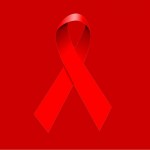Search Result
HIV and AIDS history
World AIDS Day
Since 1988, 1 December every year has been dedicated to World AIDS Day, raising awareness of the AIDS pandemic caused by the spread of HIV infection, showing solidarity with people living with HIV, and mourning those who have died.
What is World AIDS Day? | nam aidsmap
World AIDS Day | National AIDS Trust
World AIDS Day | United Nations (UN)
World AIDS Day | Wikipedia
Understanding HIV and AIDS
Peer mentoring
Living well with HIV
Undetectable = Untransmittable
For many, 1 December is associated with the red ribbon which has become an instantly recognisable symbol.
The red ribbon
 The red ribbon is a symbol of solidarity and of commitment to the fight against HIV and AIDS. The Ribbon Project was conceived in 1991 by Visual AIDS, a New York-based charity group of art professionals that aims to recognize and honour friends and colleagues who have died or are dying of AIDS. The ribbon made its public debut at the 1991 Tony Awards, but since then – in some circles – has become a popular and politically correct fashion statement for celebrities at other awards ceremonies. Because of this popularity, some activists have rightly worried that the ribbon is simply paying lip service to AIDS causes. Nevertheless, it is a powerful symbol for all of us around the world, and a unifying symbol on World AIDS Day (1 December). Today, the red ribbon is an international symbol and, for many, stands for care, concern, hope and support.
The red ribbon is a symbol of solidarity and of commitment to the fight against HIV and AIDS. The Ribbon Project was conceived in 1991 by Visual AIDS, a New York-based charity group of art professionals that aims to recognize and honour friends and colleagues who have died or are dying of AIDS. The ribbon made its public debut at the 1991 Tony Awards, but since then – in some circles – has become a popular and politically correct fashion statement for celebrities at other awards ceremonies. Because of this popularity, some activists have rightly worried that the ribbon is simply paying lip service to AIDS causes. Nevertheless, it is a powerful symbol for all of us around the world, and a unifying symbol on World AIDS Day (1 December). Today, the red ribbon is an international symbol and, for many, stands for care, concern, hope and support.
The Red Ribbon | National AIDS Trust (NAT)
Red ribbon | Wikipedia
The Red Ribbon Project | Visual AIDS
The British AIDS activists you might not know about | BBC | 2 Dec 2022
HIV transmission declining but progress slowed by pandemic | GOV.UK | 1 Dec 2022
World AIDS Day | House of Commons Library | 29 Nov 2022
'Life was a party before Aids arrived in London' BBC News | 26 Feb 2021
World AIDS Day – a year of advances in HIV research | Imperial College London | 1 Dec 2019

